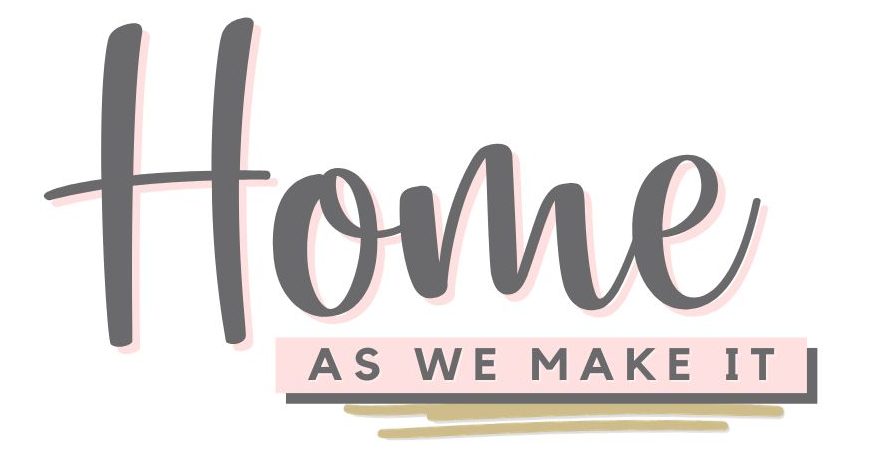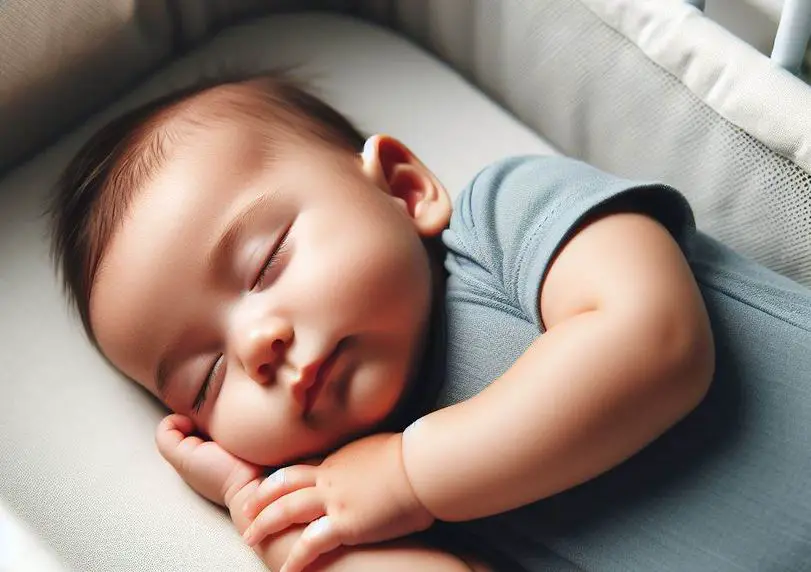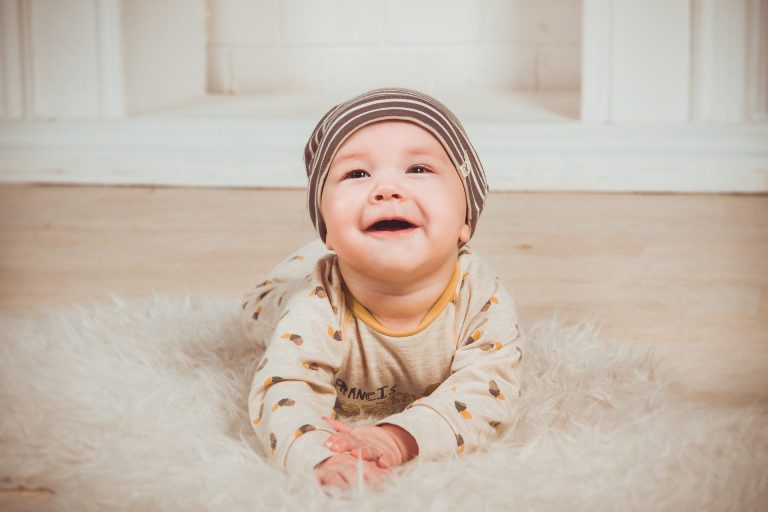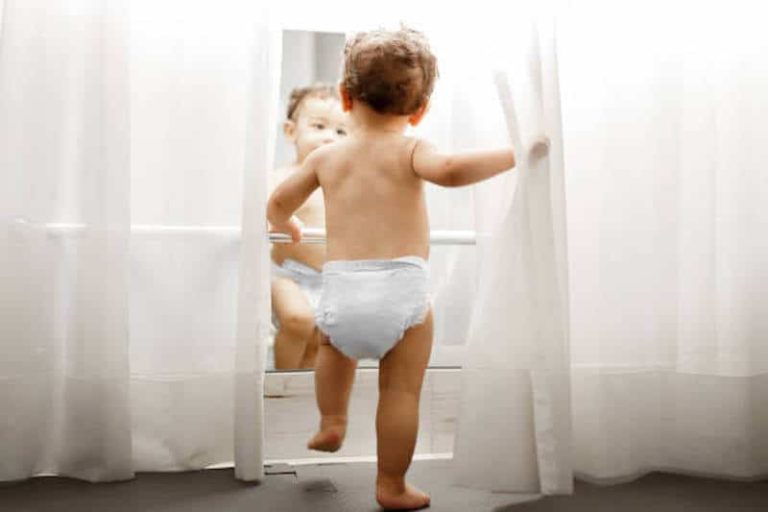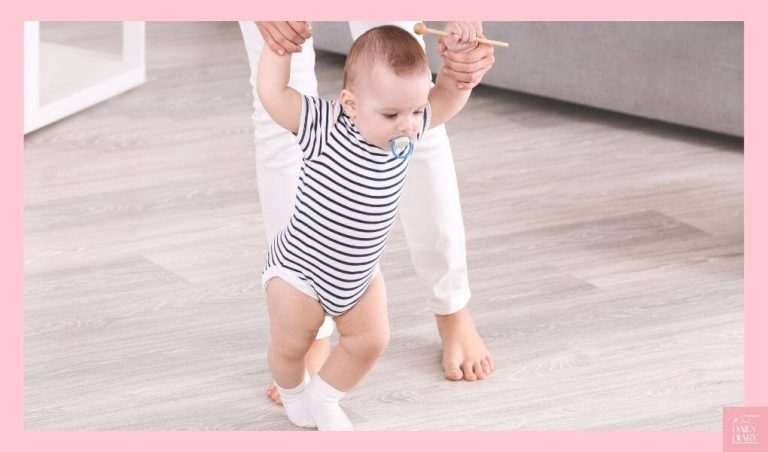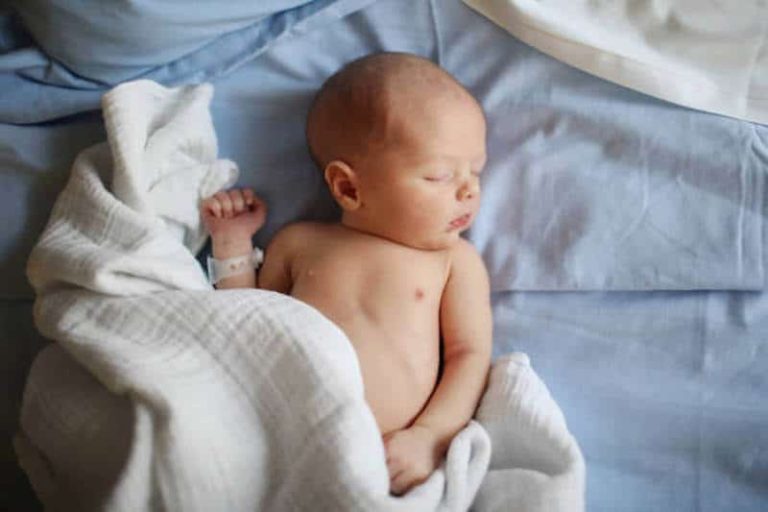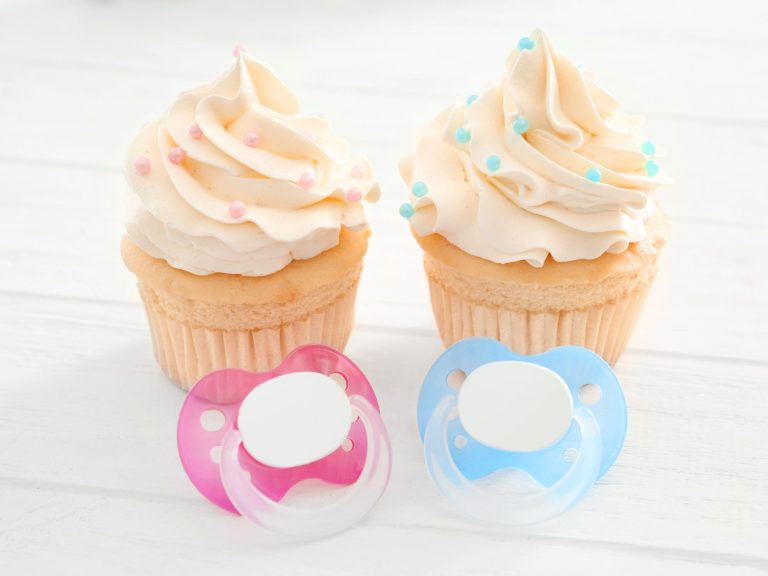Baby Turning Sideways In Bassinet (Should I Be Worried?)
It’s a common sight – you lay your sleeping baby down in their bassinet, all tucked in neatly, only to check on them a little while later and find they’ve wriggled themselves sideways!
But rest assured, it’s generally normal for babies to start doing it at some point, some sooner than others.
Note: This post may contain affiliate links, which means if you buy from my link I might make a small commission. This does not affect the price you pay. See the full affiliate disclosure here.
In this post, I’ll explain why your baby turning sideways in bassinet and what you should do about it.
Is It Ok If My Baby Turns Sideways In Bassinet?
Yes, it is normal for babies to turn sideways in their bassinets. In fact, it is a sign that they are developing their motor skills and becoming more mobile.
As babies grow and develop their muscles, they roll and move around more in their sleep.
This is a normal part of development and should not be a cause for concern.
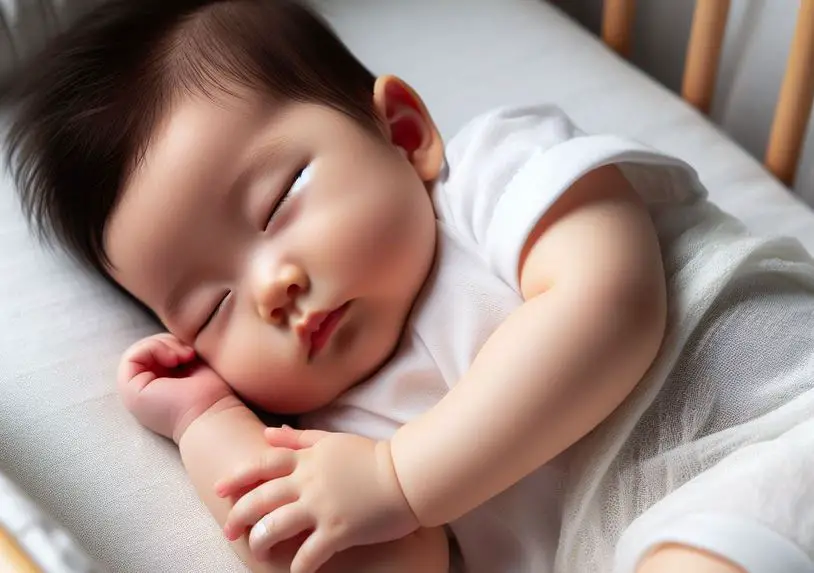
Also Read: Toddler Doesn’t Point But Reaches
Should You Reposition Your Baby?
No, you don’t need to.
If your baby’s muscles are developed enough for her to to turn to her side, she has the ability to adjust her body to protect her airway.
Why Is My Baby Turning Sideways In Bassinet?
So, let’s look into why your baby might be turning and wiggling in the bassinet in her sleep.
Motor Development
As babies grow and develop their muscles, they become more mobile and may start to wiggle, turn and move in their sleep more.
Turning or rolling over is a developmental milestone that typically starts around 4 to 6 months.
However, some develop their motor skills faster while the others catch up a bit more slowly.
If your baby has recently learned to roll over, they may turn sideways in the bassinet as they practice this new skill.
Difference In Sleep Pattern
The way a baby sleeps is significantly different from the way an adult does. Infants get about twice REM (Rapid Eye Movement) sleep, in other words, active sleep, compared to adults.
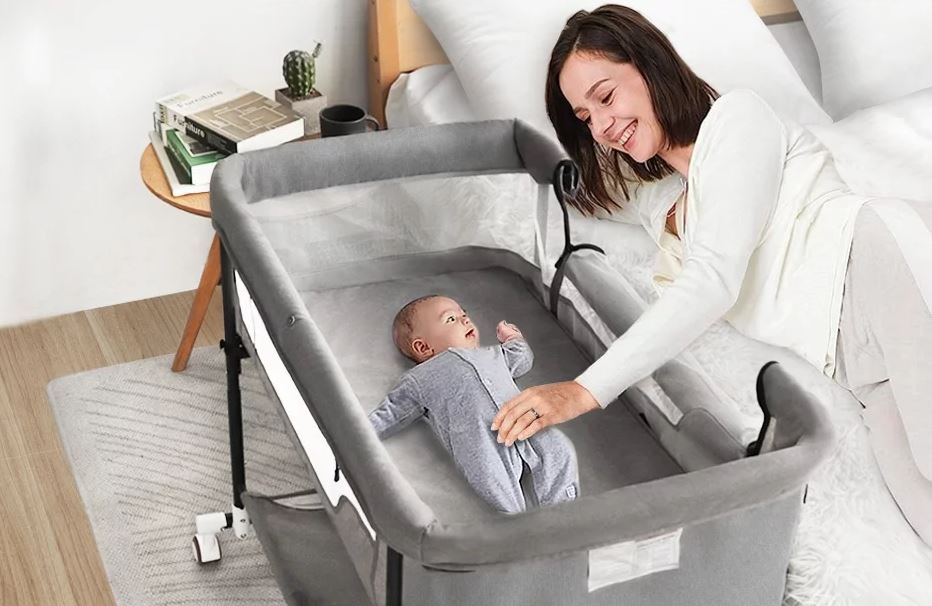
During REM sleep, an individual dreams, twitches, wiggles and moves about. This means that babies show more wiggling and moving around in their sleep.
Babies also have shorter REM to NREM (Non Rapid Eye Movement) a.k.a. deep sleep cycles.
This makes them more likely to wake up between the two.
When they do, they will either soothe themselves back into sleep, likely twisting, turning and wiggling before they do, or just cry until the parents lull them into sleep again.
Other Reasons
An infant’s nervous system is not fully developed yet.
So, it might cause a baby to twitch and jerk to the slightest noise or light, and end up sleeping in a different position.
Another thing that might cause your baby to turn and move while sleeping can be physical discomfort due to heat, cold, sweating, itches, mosquito bites etc.
Also Read: Can I Use Aquaphor On Baby Acne
Some babies simply prefer to sleep on their sides or stomachs!
What To Do If Baby Turns Sideways In Bassinet?
There are some simple steps you should take if you observe your precious little one twisting and turning in her bassinet.
We do these so that it doesn’t get in the way of her breathing.
Stop Swaddling Your Baby
When you see that your baby ends up in a different position in the bassinet during her sleep, you must stop swaddling her.
It can be dangerous for a baby to turn, wiggle, and twist while swaddled if her mouth and nose gets covered up and there’s no room for her to wiggle back free.
Move Her To A Crib
Your baby turning sideways in the bassinet is a sign that she is developed enough to be moved to a crib.
A crib will allow her to move more freely without getting her airway blocked or having stiff joints due to her movements being restricted by the bassinet’s perimeter.
Make sure the crib is built following the standard safety guidelines, with a firm mattress fitting firmly to the crib walls, with no crevices where your baby’s nose can get stuck in.
There must be no bumpers in the mattress where your baby can press her face against too.
Also Read: Can You Take A Baby Into A Liquor Store?
Make sure not to keep any blankets or soft toys in the crib, as these too can accidentally cover your baby’s face in her sleep antics and potentially suffocate her.
Make Sure Your Baby Is Comfortable
Make sure your baby is dressed accordingly for the environmental conditions, and the thermostat is set so that she is not too cold or hot.
The room should also be well ventilated to reduce sweating.
Also use a mosquito net if you have mosquitos in your area.
And make sure any bugs that bite your baby, like ants, can’t get to her.
Wrapping Up
It’s generally normal for a baby to wiggle, twist, turn and move in her sleep.
They do it due to differences in their sleeping patterns from adults, developing muscles, physical discomfort, and their nervous systems not being fully developed yet.
If you observe your baby turns and changes position in her bassinet, you should move her to a crib, and stop swaddling her to make sure her breathing is unaffected by her movements.
Ensuring your baby’s physical comfort will keep her movements to a minimum.
